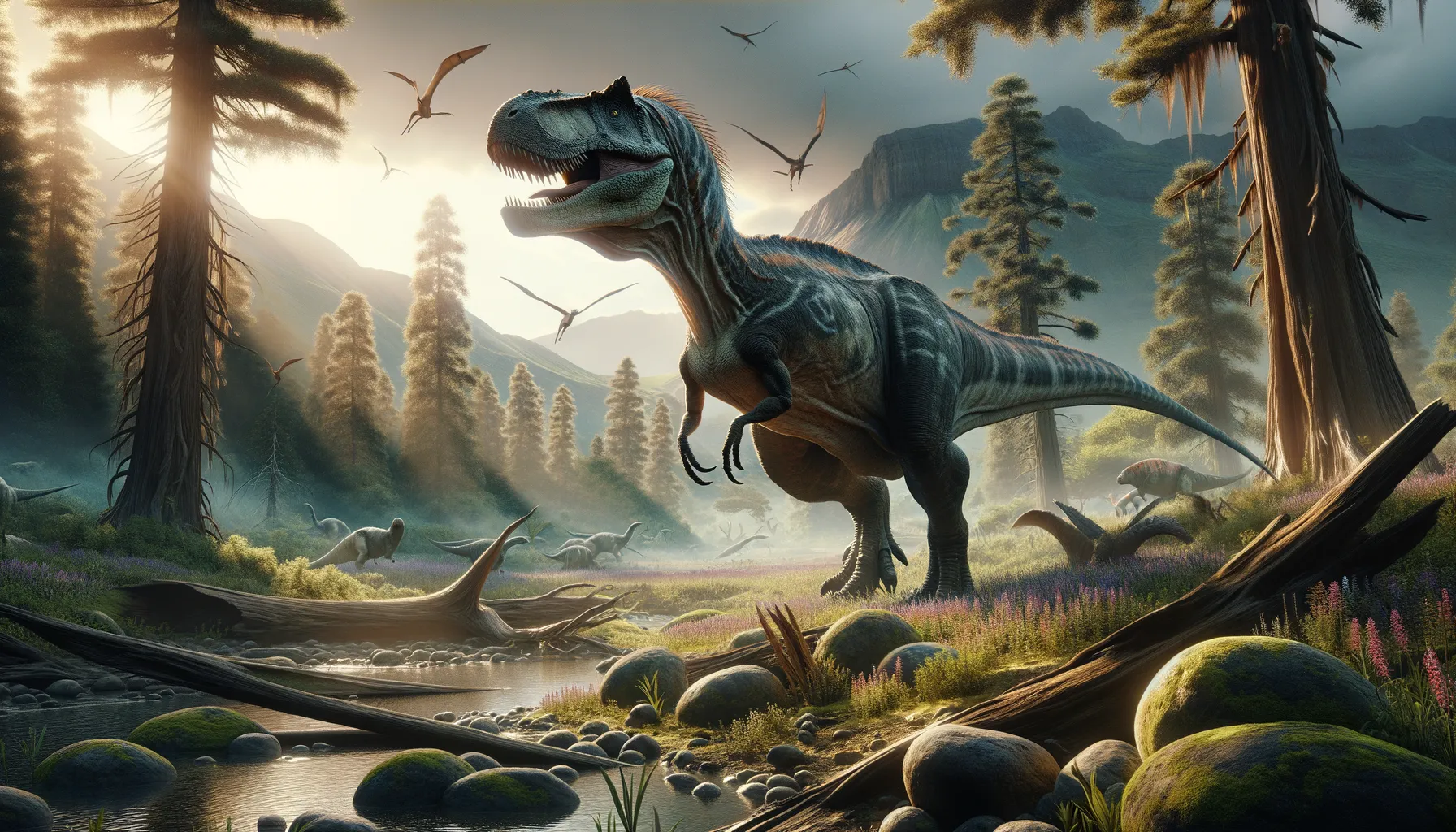
Labocania
A mysterious predator from the past!
Period
Cretaceous
Length
About 6 meters in length.
Height
Approximately 2 meters tall at the hip.
Weight
Estimated at roughly 2 tonnes.
Labocania is a genus of theropod dinosaur known from partial remains found in Mexico. It lived during the Late Cretaceous period, approximately 73 million years ago, and is thought to be related to the larger carnivorous dinosaurs. Its incomplete fossil record makes its exact taxonomy uncertain, but it's considered an important find for understanding theropod diversity in North America.
Diet
Labocania was a carnivore, preying on smaller dinosaurs and possibly scavenging. Its diet would have included a variety of contemporaneous reptiles and mammals.
Hunting
Given its presumed size and predatory traits, Labocania likely hunted alone. It would have used stealth and strength to ambush prey.
Environmental challenges
Labocania lived during a time of significant climate changes, including fluctuations in temperature and sea levels. Its habitat in what is now Mexico faced volcanic activity, altering the landscape. These challenges would have required adaptability in diet and habitat use.
Speed
Estimated to be moderate for a theropod.
Lifespan
Likely to have lived around 20-30 years.
First discovery
Discovered in 1970 by Ralph Molnar in Baja California, Mexico.
Fun Facts
- Labocania is a mysterious dinosaur that lived during the Late Cretaceous period, about 70 million years ago.
- It was discovered in Baja California, Mexico, and its name means 'furious one from the Valley of the Rooms'.
- Labocania is known from only a few fossil fragments, making it one of the more enigmatic dinosaurs.
- The exact size and appearance of Labocania are unclear, but it's believed to have been a large theropod, perhaps related to the Tyrannosaur family.
- Despite having limited fossils, Labocania has sparked much interest and debate among paleontologists about its classification.
- Because of the scarcity of fossils, scientists aren't sure exactly what Labocania ate, but it was likely a carnivore.
Growth and Development
Like other theropods, Labocania would have undergone rapid growth during its juvenile phase. Growth rates likely slowed as it approached adulthood, with skeletal robustness indicating strength. Understanding its development stages remains challenging due to limited fossil evidence.
Habitat
Labocania inhabited what were likely coastal environments with access to a rich variety of prey. The region consisted of floodplains and forests, providing diverse ecological niches. Proximity to the sea might have influenced its prey choices and survival strategies.
Interaction with other species
Labocania would have interacted with a wide range of contemporaneous fauna, including herbivorous dinosaurs, competitors, and scavengers. Its role as a predator would have positioned it at the top of the food chain. Competition for resources might have led to aggressive encounters with other carnivores.
Natural lifespan
Labocania had a natural lifespan of about 20-30 years.
Reproduction
Labocania would have reproduced like other theropods, laying eggs in nests. Parental care specifics are unknown, but it might have shared some traits with more well-known relatives. Nesting sites would have been chosen for protection and accessibility.
Social behaviour
Labocania's social behavior remains speculative due to limited evidence. It might have been solitary or possibly interacted in small groups during specific periods like breeding. Territorial behavior is a possibility given its presumed predatory nature.
Fossil locations
Fossil remains of Labocania have been found in Baja California, Mexico. Its location provides insights into the distribution of theropods in North America. The find underscores the region's rich paleontological history.
